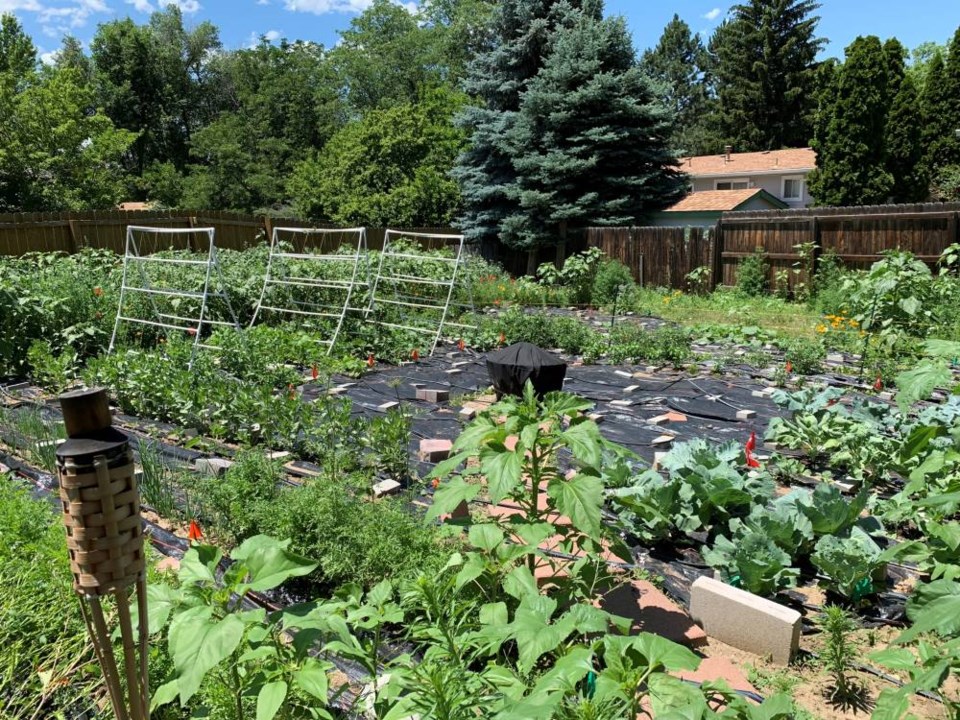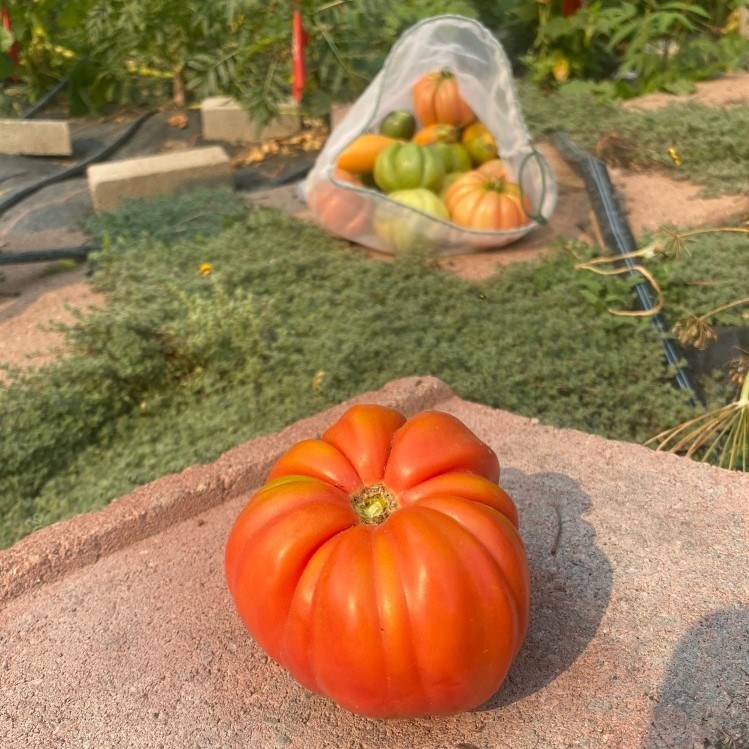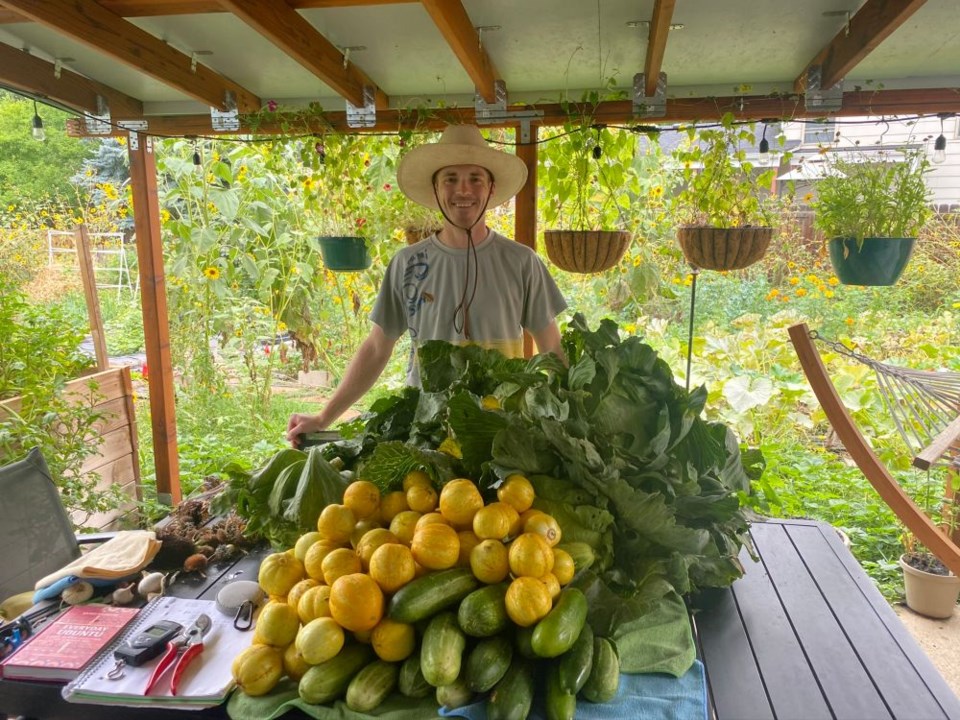As you start planning your urban farm / garden, you may decide using your entire backyard isn’t realistic or isn’t an option for you. The real goal here is to think about the space you have and to ask yourself, “Am I currently utilizing all of my space?”
If you think about this and you have a nice, luscious, green lawn that is used to the fullest extent by your dog(s) and kid(s), or if you just truly enjoy your lawn, then that is absolutely fantastic and you have earned a big congratulations since that is not common. However, if you start thinking about your yard and realize only a portion of it is being used or none of it is being used, then why not turn part of it into a garden?
You could certainly start with a small plot, say 4-by-4 feet, then make it bigger each year as you discover gardening is lovely, enjoyable and a great workout. Or you could leave grass in half of your yard and turn the other half into a vegetable jungle oasis. There are so many ways to go about this but it really just comes down to what you want and thinking about if you are utilizing the space you have available to you to the fullest extent possible.
There are a few various reasons why starting as big as possible really is better.
When people first start getting into gardening it usually goes something like this:
Someone hears how fantastic this whole gardening thing is and they get intrigued. This person then runs over to the local nursery and buys a single seedling this nursery grew, say a tomato plant. Then they have to buy dirt to put this plant in, and of course, they can’t pass on the artistic pot that will house their future tomatoes that also expresses to everyone visiting their house how artistic and free thinking of a person they are.
They then forget the fact that they have never taken care of a plant before and don’t have any idea what they are doing, which results in this particular tomato plant not getting enough sunlight and being underwatered or overwatered. The tomato plant then starts showing signs of stress, which go unnoticed by the owner until it’s too late and the plant perishes. Or if the tomato plant does stay alive, this person ends up getting only a handful of tomatoes and they realize that they spent $50 on supplies, which comes out to $10 a tomato. Which is a ridiculously high price to pay for a tomato, no matter how many hipster-laden adjectives are used to describe it.
Does this sound familiar?
On the contrary, say this same person approached gardening in a completely different way. They hear about gardening and get intrigued. They think about their house and realize only half of their backyard is being utilized. They decide to leave grass in half of the yard and turn the other half into a garden so they can grow as many vegetables as possible and potentially lower their grocery bills despite an initial cost higher than that of a single plant from a nursery.
 James' backyard in Longmont being used to the fullest extent possible to make an urban farm.(Courtesy photo)
James' backyard in Longmont being used to the fullest extent possible to make an urban farm.(Courtesy photo)They started with 100 vegetable plants and half of them ended up dying for various reasons, with lack of experience being the main factor. They still have 50 plants left, which turns out to be a fair amount of food. Not enough to sustain this person for a year, but enough to start offsetting grocery costs. Plus, this person is getting to spend time outside, it ends up being a great bonding experience for them and their kids, they’re getting a fantastic workout and they realize no matter how crazy this world gets, they can just go get lost in their garden, which can quell any amount of chaos in this world.
This person also realizes the majority of the costs to get this garden going were one-time expenses and when they do this again next year, their costs are basically seeds and water.
They also realize soil health is being built up, which means the plants are going to be more productive as time goes on and means more food and lower grocery bills next year.
Then there’s the realization they learned a lot about plants and they’re going to be able to keep more plants alive next year now that they have more experience. Whenever guests are over at this person’s house, the garden becomes the center of attention and neighbors start inquiring about what they’re doing.
Doesn’t that sound better than starting out buying a single tomato plant that somebody else grew?
 A collection of tomatoes grown from seed.(Courtesy photo)
A collection of tomatoes grown from seed.(Courtesy photo)
If you have any questions or subjects that you would like me to cover in this column, they can be emailed to: [email protected] with the subject line “Longmont Leader question.” I will happily answer any questions that you may have, after all this column is for you to benefit from and enjoy.
***
The Longmont Leader accepts contributions, photos, and op-eds for publication from community members, business leaders and public officials on local topics. Publication will be at the discretion of the editor and published opinions do not represent the views of The Longmont Leader or its staff. To submit a contribution, email [email protected].



